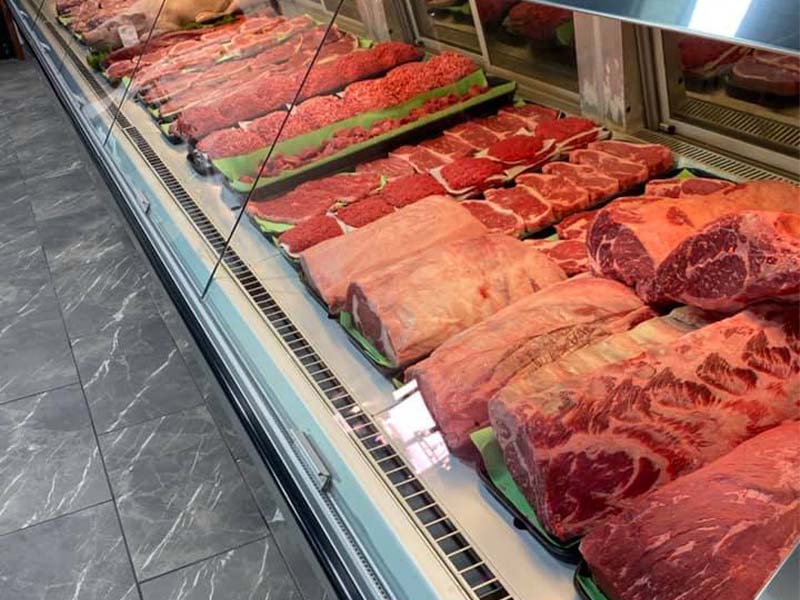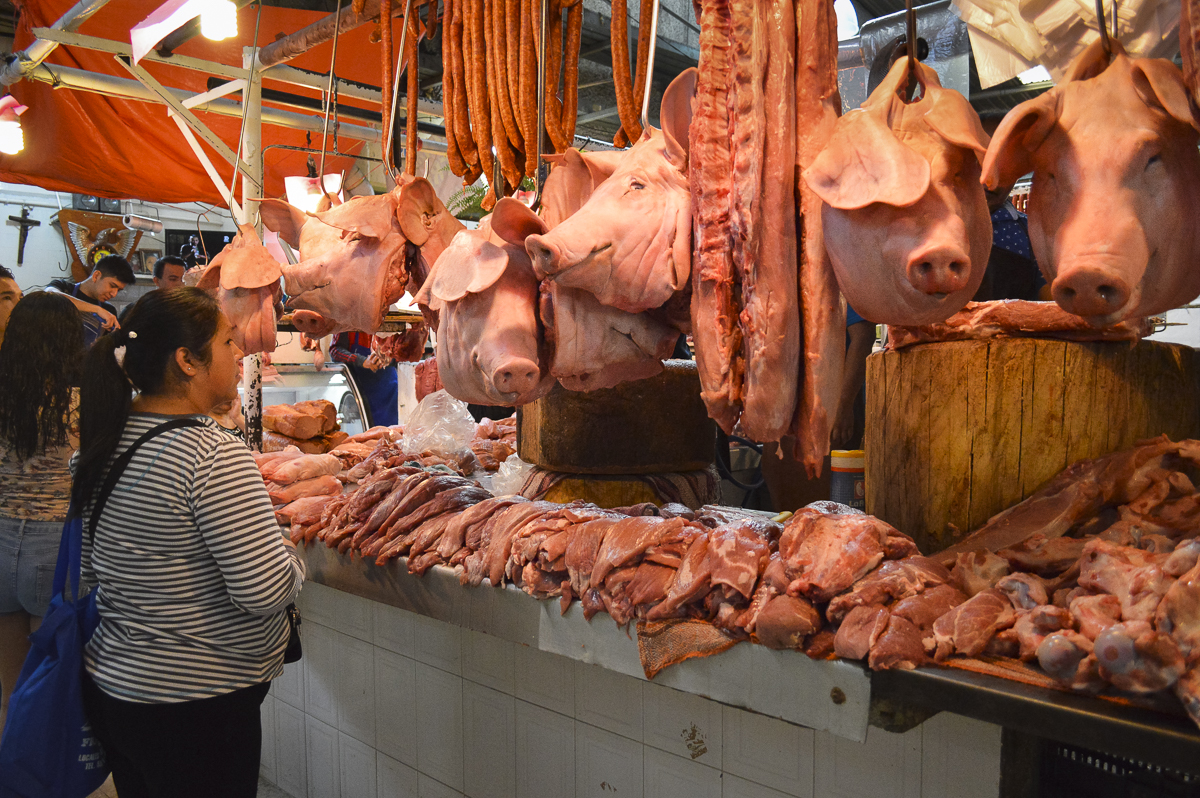Why Residents Love Bagley Farms Meat Market Edwardsville IL for Their Meat Buying
Why Residents Love Bagley Farms Meat Market Edwardsville IL for Their Meat Buying
Blog Article
Uncover the Art of the Butcher's Cut in a Modern Meat Market
In the ever-evolving landscape of modern-day meat markets, the butcher's cut has transcended its typical origins, merging old-time workmanship with contemporary techniques. bagley farms meat market edwardsville il. Today's butchers are not just processors of meat; they are well-informed craftsmens that highlight sustainability and moral sourcing. Their competence in selecting and preparing cuts tailored to details cooking requirements offers an unrivaled dining experience. What genuinely establishes the modern butcher apart is their capacity to forge a deeper connection in between consumers and the origins of their meat. How do these masters balance tradition with innovation, and what implications does this have for the future of meat usage?
Development of Butchery Strategies

The mid-20th century saw butchery methods better refined by scientific understandings into muscle biology and meat aging, boosting both tenderness and taste. Developments like vacuum cleaner packaging and refrigeration expanded product shelf-life, permitting butchers to expand offerings and boost quality assurance. This period likewise marked the surge of specialized tools, such as band saws and meat slicers, which raised precision and effectiveness in meat processing.
The 21st century has presented electronic innovation right into the butchery realm. Computerized systems currently assist in monitoring pet provenance and enhancing cuts to fulfill details customer preferences. Additionally, a rebirth in artisanal butchery has emerged, mixing standard skills with modern-day expertise to provide to customers seeking ethical and lasting meat options. This development highlights a dynamic interaction in between custom and technology, meeting contemporary needs while maintaining the craft's heritage.

Comprehending Meat Cuts

Comprehending the ins and outs of meat cuts is important for both butchers and customers seeking top quality and value. For butchers, accurate cuts show ability and respect for the craft, making sure marginal waste and optimal return.
The primary categories of meat cuts consist of primitive, sub-primal, and retail cuts. Primal cuts, such as the loin, rib, and chuck, are the huge sections at first separated from the carcass. Butchers then break these down further right into sub-primal cuts, prior to finally creating retail cuts available to customers, like ribeye or tenderloin. Each stage needs cautious focus to anatomical structure and muscle mass make-up.
Recognizing muscle structure is vital; muscle mass made use of much more regularly by the pet have a tendency to be harder and are best fit for sluggish cooking methods, while less-used muscles, like those found in the loin, are much more tender and suitable for grilling or roasting. Knowledge with these distinctions encourages consumers to make educated options, enhancing their culinary ventures.
Selecting High Quality Meat
Choosing the appropriate meat includes even more than just picking a visually attractive piece from the screen. The art of selecting top quality meat calls for a discerning eye and expertise of particular characteristics that symbolize freshness and excellence.
Second of all, consider the marbling, which describes the white streaks of fat within the muscle. Proper marbling is a key indication of tenderness and taste, as it melts throughout food preparation, boosting the meat's juiciness. Remember, greater marbling often correlates with exceptional top quality cuts, such as USDA Prime.
Texture is another critical variable; meat must feel strong to the touch, not slimy or overly soft. Additionally, be mindful of the fragrance. Fresh meat ought Clicking Here to have a tidy, neutral odor, without any type of sour or off-putting odors.
Combining Cuts With Cooking Techniques
Successfully coupling cuts of meat with the proper food preparation approaches is important for achieving ideal flavor and structure. Various cuts vary in tenderness, marbling, and connective tissue web content, each needing details methods to unlock their capacity. For example, tender cuts like filet mignon and ribeye, with their inherent marbling, advantage from high-heat, quick-cooking approaches such as cooking or pan-searing. These approaches enhance the meat's all-natural flavors and make certain a juicy coating.
Conversely, harder cuts like brisket and chuck roast are abundant in collagen, which damages down into gelatin when cooked slowly. These cuts are suitable for braising or slow-moving roasting, enabling the meat to tenderize gradually and create deep, complicated flavors. Likewise, cuts such as brief ribs and pork shoulder prosper with slow-cooking methods, where extended cooking times transform their durable structures right into delicious meals.
Lamb shanks and oxtail, which require long term food preparation to soften, are best candidates for cooking or slow-moving simmering. These methods coax out rich, passionate tastes while preserving moisture. By recognizing the one-of-a-kind characteristics of each cut, chefs and home cooks alike can raise their cooking developments, making sure each recipe is both satisfying and unforgettable.
The Butcher's Duty Today
Navigating the progressing landscape of the modern meat market, the butcher's role today prolongs past simple preparation of cuts. Contemporary butchers are culinary craftsmens, educators, and supporters for sustainable techniques. They connect the space in between the ranch and the fork by making sure ethical sourcing, understanding animal husbandry, and prioritizing transparency in the supply chain. This change mirrors the growing customer need for top quality over quantity, where provenance and animal welfare are critical.
Along with crafting exact cuts, butchers currently engage straight with consumers, providing cooking guidance and tailoring selections to match individual demands and preferences. Their expertise in meat aging, marbling, and taste accounts equips customers to make educated decisions, enhancing their cooking experiences. This individualized service exhibits the butcher's evolving duty as a trusted expert in the kitchen.
Additionally, butchers are critical in decreasing waste, using entire animals to develop varied products such as sausages and stocks - bagley farms meat market edwardsville il. This thorough approach not only appreciates the pet but also lines up with modern sustainability goals. This way, the modern butcher personifies both practice and advancement, adapting to an ever-changing market while maintaining the artistry and integrity of their craft

Verdict
The modern butcher's craft delicately weaves typical techniques with modern advancements, highlighting sustainable practices click over here and ethical sourcing. Mastery in recognizing varied meat cuts and quality signs equips butchers to give educated referrals, aligning details cuts with optimal why not try here cooking methods. This proficiency not only elevates cooking experiences however additionally strengthens the link in between customers and the origins of their food. By honoring historical practices while welcoming modern needs, the butcher's duty continues to be essential in today's sophisticated meat market.
Report this page